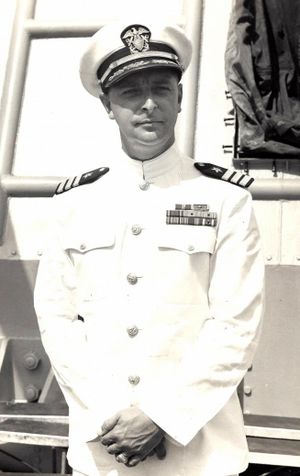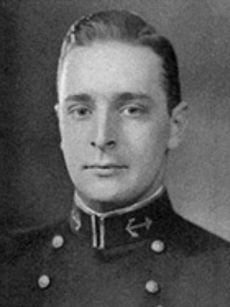Rufus Taylor facts for kids
Quick facts for kids
Rufus Taylor
|
|
|---|---|

Taylor as Commander of USS Noa in 1948
|
|
| 8th Deputy Director of Central Intelligence | |
| In office October 13, 1966 – February 1, 1969 |
|
| Appointed by | Lyndon B. Johnson |
| Director | Richard Helms |
| Preceded by | Richard Helms |
| Succeeded by | Gen. Robert E. Cushman Jr. |
| Personal details | |
| Born |
Rufus Lackland Taylor Jr.
January 6, 1910 St. Louis, Missouri, U.S. |
| Died | September 14, 1978 Whispering Pines, North Carolina, U.S. |
| Military service | |
| Allegiance | United States |
| Branch/service | United States Navy |
| Rank | Vice Admiral |
| Commands | Office of Naval Intelligence |
| Battles/wars | World War II |
Rufus Lackland Taylor Jr. (born January 6, 1910 – died September 14, 1978) was a high-ranking officer in the United States Navy. He became a Vice Admiral and led the Office of Naval Intelligence. Later, he served as the Deputy Director of the Central Intelligence Agency (CIA) from 1966 to 1969.
Contents
Rufus Taylor was born in St. Louis, Missouri. He went to school in New Hampshire and Missouri. In 1929, he joined the United States Naval Academy. He played baseball and soccer while he was there. He graduated in 1933.
After graduation, Taylor served on Navy ships like the USS Arizona. During World War II, he worked in the Pacific Ocean. He was involved in intelligence work, which means gathering secret information.
From 1938 to 1941, Taylor was stationed in Japan. He was sent there by Naval Intelligence to learn the Japanese language. In 1942, he was part of an intelligence team in the Philippines. When Japan invaded, he had to escape by boat and submarine to Australia.
He then worked with Allied naval forces in the Southwest Pacific. In 1943, he moved to Washington, D.C., to work at the Office of Naval Intelligence (ONI). Later, in Hawaii, he helped to break enemy naval codes. This work was very important for the Allied victory.
After the war, he served on ships again. He also worked at the National Security Agency (NSA). In 1963, he became the Director of the Office of Naval Intelligence (ONI). He led Naval Intelligence until 1966. During this time, he helped set up a secret unit for the Navy called 'Task Force 157'. This unit gathered human intelligence, which is information collected by people.
Leading at the CIA
In 1966, Rufus Taylor became a Vice Admiral. He was then appointed as the Deputy Director of the Defense Intelligence Agency (DIA). Soon after, President Lyndon B. Johnson chose him to be the Deputy Director of the Central Intelligence Agency (CIA). The United States Senate quickly approved his appointment.
As Deputy Director, Taylor was the second-in-command at the CIA. He worked under the Director of Central Intelligence (DCI), Richard Helms. If the Director was away, Taylor took over their duties. He helped solve important disagreements within the agency.
The Yuri Nosenko Case
One big challenge Taylor faced was the case of Yuri Nosenko. Nosenko was a Soviet intelligence officer who came to the U.S. in 1964. Some people at the CIA, like James Jesus Angleton, thought Nosenko might be a double agent. This meant they thought he was secretly working for the Soviets. Nosenko was held by the CIA for several years while they tried to figure this out.
In 1967, Director Helms asked Taylor to look into the case. Taylor reviewed many files and interviewed the CIA officers involved. He decided that Nosenko was not a double agent. Taylor recommended that Nosenko be released. Despite some strong disagreements, Nosenko was freed in 1969.
The Sam Adams Dispute
In 1968, Taylor led a special review board at the CIA. This board looked into a disagreement involving an analyst named Sam Adams. Adams had challenged the official numbers of Viet Cong fighters during the Vietnam War. The U.S. military had lower numbers, which some believed made the war effort look better.
Adams thought his numbers were more accurate. The disagreement between the military and CIA analysts became a big problem. Taylor's board looked at all the information. They found that Adams' numbers were probably more correct. However, they also said his method wasn't perfect. The board recommended that Adams get another chance to present his findings. Adams later resigned from the CIA in 1973.
Legacy and Personal Life
Vice Admiral Rufus L. Taylor is remembered for his important work in intelligence. He was a great manager and helped analyze secret codes during World War II. His efforts gave critical information to Navy commanders, which helped the Allies win.
The National Military Intelligence Association gives out an award in his name every year. It honors a Naval Intelligence professional who shows dedication and unique achievements, just like Vice Admiral Taylor.
Rufus Taylor was married to Karin Margareta Gerdts. They had a son and two daughters. Their son, Rufus Lackland Taylor III, also graduated from the U.S. Naval Academy.
See also
- Deputy Director of the Central Intelligence Agency
- Office of Naval Intelligence


